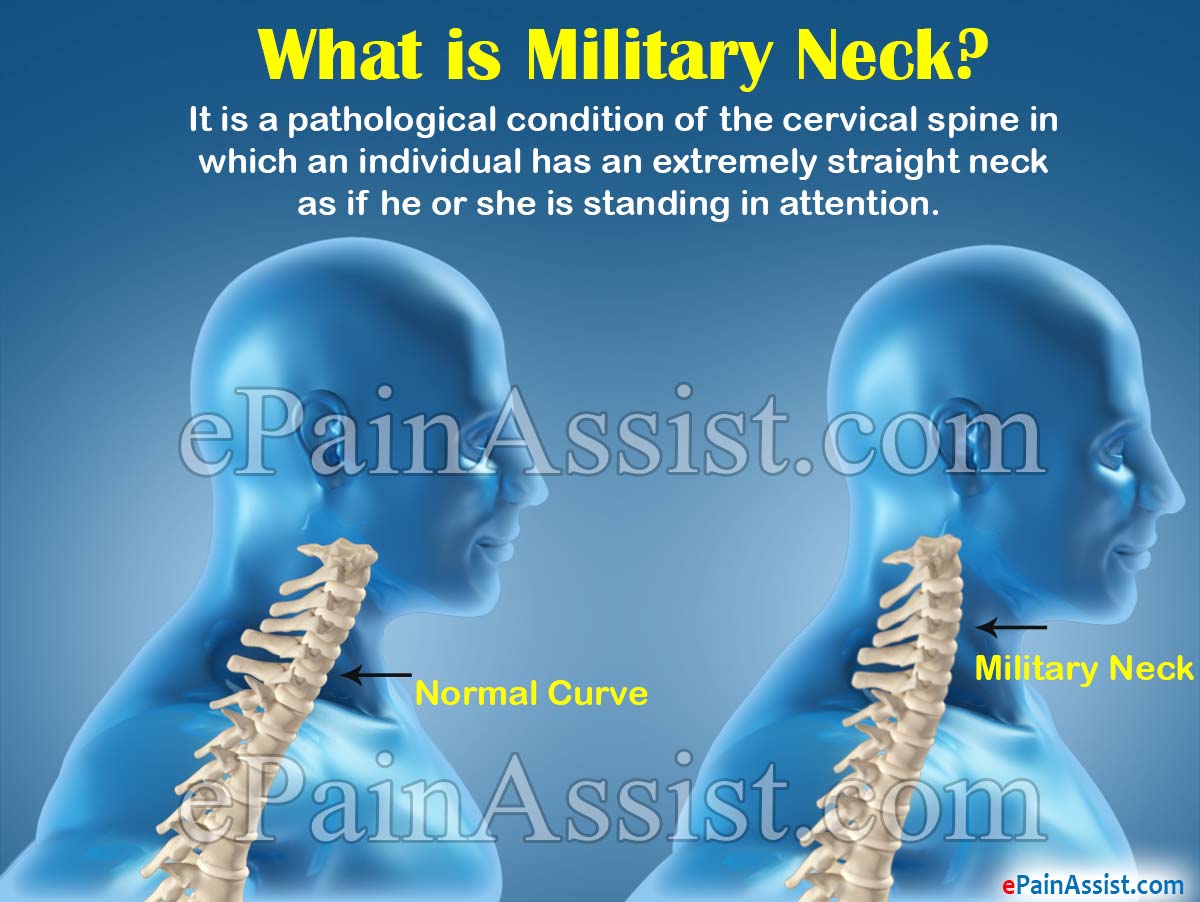What is Military Neck?
Military Neck does not in any way mean that an individual has a straight neck like when military personnel are standing in attention. Military Neck is a pathological condition of the cervical spine in which an individual has an extremely straight neck as if he or she is standing in attention. It is actually a bony deformity of the cervical spine. In medical terminology it is referred to as cervical kyphosis. Under normal circumstances, the cervical spine has a shape of the letter “C” with a forward bend but in Military Neck, the shape of the neck is either or straight or bent backwards. The root cause of this condition is poor posture of the neck. Military Neck may be accompanied by pain but in majority of the cases it is relatively asymptomatic. Military Neck can definitely be treated but it takes a lot of time and patience on the part of the patient to restore normal structure of the neck.

What are the Causes of Military Neck?
To understand Military Neck, it is important to understand the normal anatomy of the neck. The neck or the cervical spine is made up of seven vertebrae. The normal curvature of the cervical spine which has a “C” shape is called as lordosis. The structure of the neck is such that it is able to bear weight of the entire head and allow free motion of the neck. In Military Neck, the cervical spine becomes straight due to poor posture or may even bend backwards and the normal curvature of the neck is just not there. Poor posture of the neck either while working or sleeping is the most common cause of Military Neck. Sitting in front of the computer with the neck flexed forward can also cause military neck. Military Neck can also be caused after suffering a jolt in the neck from a motor vehicle crash. Sleeping with a thick pillow underneath the neck can also result in development of Military Neck.
What are the Symptoms of Military Neck?
Military Neck has two main symptoms which are pain in the neck and neck stiffness. In some cases of very mild loss of curvature of the neck, there may be no symptoms at all. The pain in the neck may radiate to the extremities in the shoulder, arms, and fingers. Another symptom that may be seen with Military Neck is headaches.
How is Military Neck Treated?
As stated above, Military Neck can be treated but it requires a lot of time and patience on the account of the patient. The treatment depends on the severity of the conditions and the symptoms experienced by the patient. Success of the treatment for military neck also depends on how diligently the patient follows the recommendations of the physician. For temporary relief, NSAIDs and other pain medications can be taken for relief of pain associated with military neck. Neck exercises also play an important role in treatment of Military Neck. Neck traction is also an important aspect of treating Military Neck.
Exercise for Military Neck
These are done to strengthen the neck muscles. Once the strength is regained the muscles support the cervical spine more and restore normal structural anatomy of the neck. Some of the neck exercises for Military Neck are:
Cervical Flexion and Extension Exercise for Military Neck: This exercise is quite easy to do and can be done while sitting in office or at home. All you need to do is try and tuck the chin in and gently bring the head forwards trying to touch the chest. Next, try and bend the neck backwards as far as possible. Do this at least five times a day.
Cervical Lateral Flexion Exercise for Military Neck: To do this exercise, bring the left ear to the left shoulder as far as possible. While doing this do not rotate the neck. Maintain this position for about 15 seconds. Now do it for t he right side. Do this about five times a day.
Cervical Rotation Exercise for Military Neck: In this exercise, turn the neck to the right as far as possible trying to touch the chin to the shoulders. Maintain this position for about 15 seconds. Now do the same on the left side.
Neck Traction for Military Neck: This is also quite helpful for Military Neck. This is done by extending the neck slightly. This is done by the physical therapist for optimal results. You should not try and do it without supervision as you may injure the neck muscles. There are several traction pillows available in the market these days which help in cervical traction to relieve Military Neck.
Also Read:
